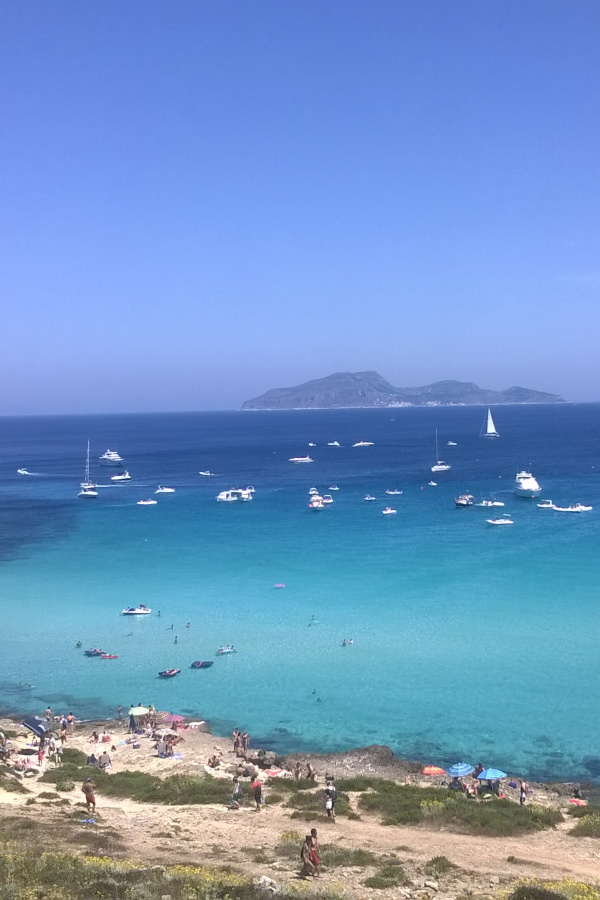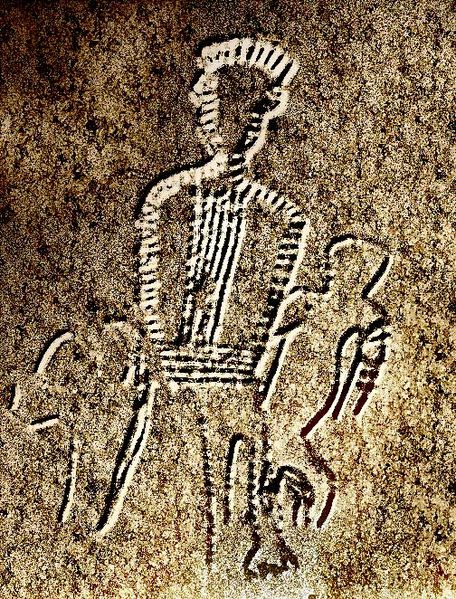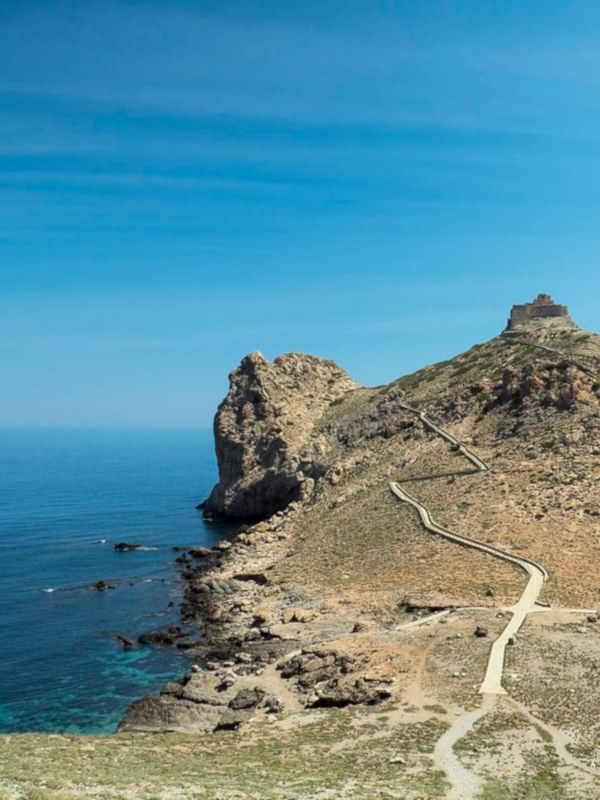Favignana, Marettimo and Levanzo
the wonderful Egadi Islands archipelago
The Egadi Islands are an archipelago off the coast of Trapani and Marsala consisting of three main islands that everyone is familiar with, but the archipelago is made up of other smaller (uninhabited) islands such as Formica, Maraone, Stagnone and Galeotta. All the islands belong to the municipality of Favignana, inhabited by 4,000 people.
For those who love to immerse themselves in unspoilt nature, the Egadi Islands are the ideal holiday. Staying overnight in the elegant villa rooms and suites of Giardini Mon Plaisir, enjoying a lovely swimming pool amidst the trees and orchards, is the perfect starting point to organise a visit to the nearby islands of Favignana, Levanzo and Marettimo.
The sea is the star element in a place where silence, colours and scents mingle to create a magical atmosphere. Just as the wind dictates the pace of life for the fishermen, who are forced to respect the laws of nature, which has given so much to their land. A landscape protected by the Marine Protected Area, established to preserve the natural beauty of the Egadi Islands, which is the largest marine reserve in Europe. The Egadi Islands offer experiences not to be missed: and guarantee a holiday of long moments of relaxation and recreation.
YOUR FREE GUIDE TO THE EGADI ISLANDS - LEVANZO
Gardens Mon Plaisir your ‘personal guide’
to discover West Sicily!
Favignana
Favignana is an earthly paradise where the crystal clear sea dominates the shoreline and contrasts with the white of the rocks and the beach. On the island there is one of the most important and unique museums in Italy. This is the former Florio factory, once used to store the equipment and boats used for the tuna slaughter and canning process. Built in 1859, the factory was the hub of the tuna canning industry, thanks mainly to the commitment and dedication of the Florio family.
After a period of decline, the Region of Sicily invested in the renovation of the area, transforming the Stabilimento Florio into Europe’s largest Sea Museum.
Tuna fishing has always been flanked by another historical activity of Favignana, tufa mining. The Hypogeum Gardens are one of Favignana’s main attractions, and represent the best expression of the fusion of Favignana’s tuff and green gardens. While strolling through the historic centre of Favignana, one can see how the limestone quarries are perfectly integrated with vegetable gardens and orchards, creating a harmonious environment. The Garden of the Impossible, another name for the Hypogean Gardens, has now become a popular botanical garden.
Favignanese tuff has also gained in prestige thanks to the Cathedral of Monreale, a Unesco World Heritage Site since 2015, which is almost entirely built with this material. Favignana also translates into beaches and coves, which can be reached both by sea and land. Among the most popular destinations are Cala Azzurra, Lido Burrone and Marasolo, which are sandy beaches. Other coves that are more rugged and rocky are Cala Graziosa, Preveto, Pirreca, Cala Rotonda and Cala del Pozzo, where one can swim in peace. Favignana’s most famous cove is Cala Rossa.


Favignana
Favignana is an earthly paradise where the crystal clear sea dominates the shoreline and contrasts with the white of the rocks and the beach. On the island there is one of the most important and unique museums in Italy. This is the former Florio factory, once used to store the equipment and boats used for the tuna slaughter and canning process. Built in 1859, the factory was the hub of the tuna canning industry, thanks mainly to the commitment and dedication of the Florio family.
After a period of decline, the Region of Sicily invested in the renovation of the area, transforming the Stabilimento Florio into Europe’s largest Sea Museum.
Tuna fishing has always been flanked by another historical activity of Favignana, tufa mining. The Hypogeum Gardens are one of Favignana’s main attractions, and represent the best expression of the fusion of Favignana’s tuff and green gardens. While strolling through the historic centre of Favignana, one can see how the limestone quarries are perfectly integrated with vegetable gardens and orchards, creating a harmonious environment. The Garden of the Impossible, another name for the Hypogean Gardens, has now become a popular botanical garden.
Favignanese tuff has also gained in prestige thanks to the Cathedral of Monreale, a Unesco World Heritage Site since 2015, which is almost entirely built with this material. Favignana also translates into beaches and coves, which can be reached both by sea and land. Among the most popular destinations are Cala Azzurra, Lido Burrone and Marasolo, which are sandy beaches. Other coves that are more rugged and rocky are Cala Graziosa, Preveto, Pirreca, Cala Rotonda and Cala del Pozzo, where one can swim in peace. Favignana’s most famous cove is Cala Rossa.

Levanzo
Levanzo is the smallest island of the Egadi Islands, and at the same time a land of great discoveries.
The Cave of the Genovese is one of the most important discoveries concerning the heritage of prehistoric representations. Inside the cave one can admire depictions of large animals and also human figures in the act of hunting or dancing. Studies date the graffiti and engravings to the Late Palaeolithic and Neolithic periods. A discovery that attracts numerous enthusiasts and scientists from all over the world every year. The Grotta del Genovese can be reached on foot, as can the rest of Levanzo, which can also be visited by bicycle.
Levanzo is not only caves, but also an ideal place for underwater archaeology and diving enthusiasts. Areas such as the Parete del Faro, the edge of the Genovese, the Faraglione and the Punta pesce shoal are favourite spots for divers. In the area between Cala Minnola and Punta Altarella, there is an ancient wreck from the Roman period, filled with amphorae and ceramics. Among the opportunities offered by Levanzo is a boat tour, by which one can continue to discover all the inlets and rocky coves that characterise this island.
Marettimo
Marettimo is the most mountainous island of the Egadi Islands, ideal for hiking enthusiasts.
It is possible to follow the path, created by the forestry corps, on a scenic hike to the recently renovated Punta Troia Castle. It was built by the Saracens in the 9th century as a watchtower over the sea, but only took on its present form centuries later with the intervention of the Spanish. The castle is situated on the top of the Punta Troia promontory and offers an ideal location from which to observe the panorama and take photos to share. In addition to the path, the Castle can also be reached by boat. Inside the castle is the Prisons Museum and the Monk Seal Observatory of the Egadi Islands Protected Marine Area.
Another destination for hiking enthusiasts is Monte Falcone. It is 686 metres above sea level and is the highest mountain in Marettimo.


Marettimo
Marettimo is the most mountainous island of the Egadi Islands, ideal for hiking enthusiasts.
It is possible to follow the path, created by the forestry corps, on a scenic hike to the recently renovated Punta Troia Castle. It was built by the Saracens in the 9th century as a watchtower over the sea, but only took on its present form centuries later with the intervention of the Spanish. The castle is situated on the top of the Punta Troia promontory and offers an ideal location from which to observe the panorama and take photos to share. In addition to the path, the Castle can also be reached by boat. Inside the castle is the Prisons Museum and the Monk Seal Observatory of the Egadi Islands Protected Marine Area.
Another destination for hiking enthusiasts is Monte Falcone. It is 686 metres above sea level and is the highest mountain in Marettimo.






